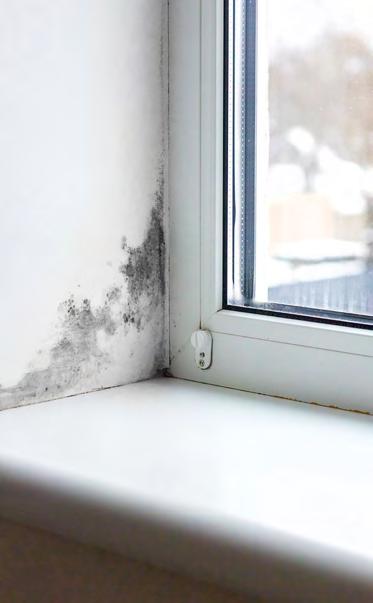
1 minute read
Helpful
Guide
Condensation
Advertisement
There’s always some moisture in the air even if you can’t see it. When the air gets colder, it can’t hold all the moisture and tiny drops of water appear. This is condensation. You’ll see it on cold windows and walls when you’re doing things like cooking, washing or having a bath.
Condensation tends to get worse in cold weather and if it isn’t prevented, can form patches of black mould. If the mould is left untreated, it can make window frames rot and could increase the risk of respiratory illnesses.
How can I help prevent condensation and mould?
If there isn’t enough ventilation in your home, condensation can leave pools of water that encourages the growth of unsightly black mould. Although kitchens and bathrooms are generally the main rooms in a house that create steam and humidity, the condensation and mould is more likely to appear in colder areas like bedrooms and behind cupboards.
Heat and ventilation
Keeping your home properly heated and ventilated is the best way to avoid condensation, mould and damp. If you’re struggling with your energy bills don’t worry in silence.
We’ve put a whole host of information together on the support that’s available, and you’ll find it on the ‘cost of living’ section of our website, www.castlesandcoasts.co.uk.
Our friendly Financial Inclusion Team are also on hand to offer support and signposting. You can speak to a member of the team by calling 0800 085 1171
Treating condensation and mould
You’ll need to tackle condensation or mould if it’s become a problem. These everyday tips should help prevent them becoming an issue in your home.

Do you find you have water or too much moisture on cold windows? Wiping this away with a sponge takes little effort for maximum effect to help stop this getting worse. Wipe down your windows and window sills every morning using a cloth. Wring out the cloth rather than drying it on a radiator.
To help stop mould from taking hold, treat any mould you have in your property as quickly as you can by washing walls and window frames with a fungicidal wash that carries a Health & Safety Executive approval number. Follow the manufacturers’ guidelines when you use these products. If you do this and follow the other advice given here, the mould is much less likely to spread and shouldn’t reappear.


